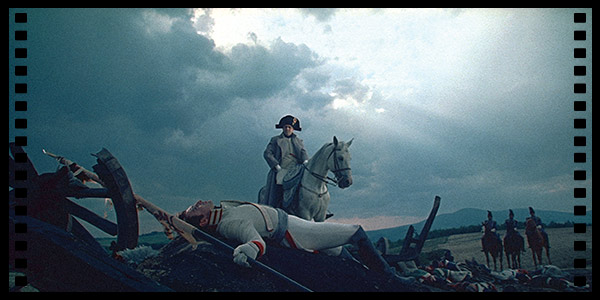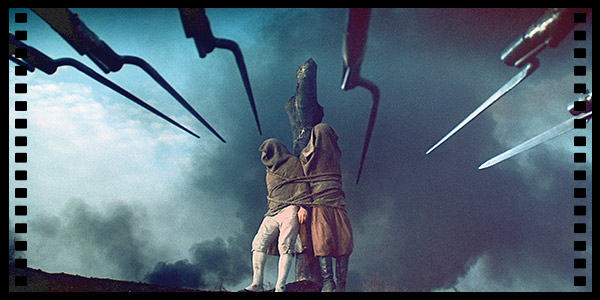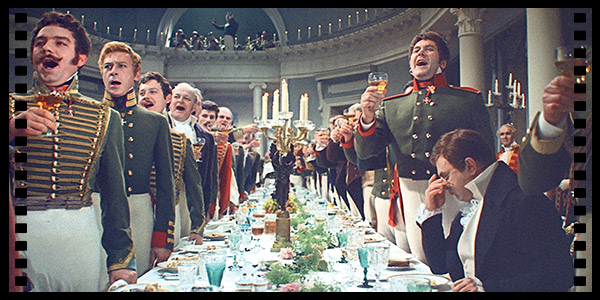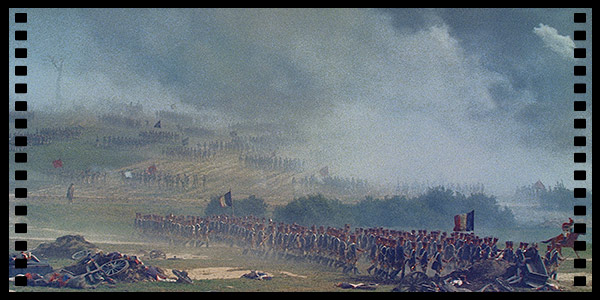Subtotal: $
Checkout-

Edna St. Vincent Millay’s “Conscientious Objector”
-

Oscar Romero
-

The Martyr in Street Clothes
-

Editors’ Picks Issue 24
-

Van Gogh Comics
-

Boys Aren’t the Problem
-

The Woman Who Carried Me
-

Samuel Ruiz García
-

Christian Nonviolence and Church History
-

American Muslims: Race, Faith, and Political Allegiance
-

Ministers and Magistrates
-

Pick the Right Politics
-

Editor’s Postscript: Notes from the Lockdown
-

Readers Respond: Issue 24
-

Family and Friends: Issue 24
-

What Goes Up
-

The Politics of the Gospel
-

What Are Prophets For
-

A Letter to the Emperor
-

The Anabaptist Vision of Politics
-

Jakob Hutter
-

The Bruderhof and the State
-

Saint Patrick
-

Reading Romans 13 Under Fascism
-

Holding Our Own
-

Living with Strangers

After a few years devoted to gambling and women, Count Lev Nikolaevich Tolstoy joined the army at age twenty-two in 1851. The young aristocrat dropped out of university, sat the cadet exam, then spent three years in the Caucasus. With the outbreak of war in 1854, Tolstoy, now a junior officer, was mobilized west. After a stint on the Romanian front, where strife had broken out after Western powers opposed Tsar Nicholas I’s designs on Ottoman lands, Tolstoy was sent to the Crimean peninsula where he passed almost a year in and around the picturesque Black Sea town of Sevastopol, then under siege by a multinational alliance of armies. Tolstoy manned a fortified bastion during the climactic ten-day bombardment, developing a lifelong resistance to making physical brutality more humane through modest reforms and stopgap improvements.
Tolstoy wrote three short stories about the siege that crystallized his belief that war itself, rather than how it is fought, is the moral evil to be concerned about. Sevastopol Sketches, which established Tolstoy’s national fame, begins with the narrator’s introduction to the city under siege in December 1854, in a moment of quiet when he is rudely led into the amputation room for wounded soldiers. “You will witness fearsome sights that will shake you to the roots of your being,” he writes, “you will see war not as beautiful, orderly and gleaming formation, with music and beaten drums, streaming banners and generals on prancing horses, but war in its authentic expression – as blood, suffering and death.” While that first sketch concludes with nationalist hopes for Russian victory, its concern for wounded soldiers already prompts grim reflections on the propriety of the enterprise.

Stills taken from the movie War and Peace, directed by Sergei Bondarchuk, Soviet Union, 1966. The movie was restored and re-released in 2019 by Janus Films. All images courtesy of Janus Films
In the second sketch, set in May 1855, concern has become corrosive doubt. After months of siege, the reports of bullets and the shriek of cannon fire ring in the narrator’s ears as both echo daily between the ramparts and the trenches. The “angel of death” has “hovered ceaselessly,” for in a stalemated confrontation “the dispute which the diplomats have failed to settle is proving to be even less amenable to settlement by means of gunpowder and human blood.
The second sketch concludes with an episode Tolstoy himself had witnessed. Following two days of fighting, the surviving officers agree to a truce for an ostensibly humane purpose: to allow each side to take responsibility for its dead and wounded. “White flags have been raised both on the Russian bastion and along the trench.” The scene is certainly sickening: “Hundreds of men, with curses and prayers on their parched lips, tossed and groaned, some among the corpses in the flowering valley.” These corpses were “the bodies of men who two hours earlier had been filled with all manner of hopes and desires.”
The sketch is caustic about the ability of warring armies to agree to a moment of humanity during hostilities. Officers of both sides chat with one another courteously about tobacco beneath the incongruously “resplendent” sun as the corpses are carted off. The humane treatment of the wounded and the dead does not lessen the evil of war, Tolstoy reflects, let alone lead to peace. “It might be supposed that when these men – Christians, recognizing the same great law of love – see what they have done, they will instantly fall to their knees in order to repent.… Not a bit of it! The scraps of white cloth will be put away – and once again the engines of death and suffering will start their whistling; once again the blood of the innocent will flow and the air will be filled with their groans and cursing.” The humanitarian impulse merits just a pause amid death-dealing – and perhaps, by prettifying it, makes it worse.
“Get rid of falsehood and let war be war and not a game.” —Prince Andrei, in War and Peace
Most of the time, it is a good thing to reform a bad practice that seems unlikely to be abolished. In fact, it is usually a good thing to pursue reform even when simultaneously organizing ourselves as abolitionists. Yet Tolstoy went further, indicting as a complete mistake the attempt to make evil more humane. Perhaps he was wrong. But even if he was, his arguments apply powerfully whenever we pursue the agenda of humanizing war while letting slip our more ambitious hopes for its eradication. They apply with special force to Americans’ situation today as we find ourselves in a “forever war” – one that has continued for almost two decades at least in part because of how humane it has been made to seem.

Tolstoy’s convictions about war developed in two stages, one before his Christian conversion and one after it. We can overhear his internal debates during the first stage by listening to one of his most famous characters, Prince Andrei, the debonair leading man of War and Peace who serves as an officer in the Russian campaign against Napoleon. “One thing I would do if I had the power,” Andrei declares in an agitated conversation on the eve of battle, “I would not take prisoners.” He continues:
That by itself would quite change the whole war and make it less cruel. As it is we have played at war – that’s what’s vile! We play at magnanimity and all that stuff.… If there was none of this magnanimity in war, we should go to war only when it was worthwhile going to certain death, as now.… War is not courtesy but the most horrible thing in life; and we ought to understand that and not play at war. We ought to accept this terrible necessity sternly and seriously. It all lies in that: get rid of falsehood and let war be war and not a game.
Prince Andrei’s proposal, which comes to him as an epiphany, is to be harsh in war rather than indulge in a false humaneness that moralizes perpetual death. He calls for a war with no quarter given: If in a battle an enemy were captured or laid down his arms and surrendered, it would not save him from death. Intensifying war, Andrei believes, for all its brutality in the short run, would lead to more humanity and less suffering over time – precisely because it would lead to more peace. Humanizing war, by contrast, could result in less humane outcomes. It could even foment more war by making it easier to start: a less fateful and momentous choice, because the stakes appear lower.
Humanizing war could result in less humane outcomes. It could even foment more war by making it easier to start.
It is an interesting coincidence that, only a year after Tolstoy sat down in 1863 to write War and Peace (it appeared in 1869), the great powers of Europe negotiated the first international treaty calling for humane treatment in war. This first trickle of rules in what became an eventual flood placed controls on hostilities. And unlike prior maxims about right conduct in war going back to the Bible, the treaty did so for the first time precisely for the sake of a more “humane” kind of war.
This pioneering legal instrument was the Geneva Convention of 1864. It addressed how soldiers were to be treated if they were injured on the battlefield and how to arrange for care for them in the aftermath. Tolstoy, who was then revising his novel, might have heard about it; he has Prince Andrei allude to this fledgling and original attempt: “They talk to us of the rules of war, of chivalry, of flags of truce, of mercy to the unfortunate and so on,” Andrei says. “It’s all rubbish!” Prince Andrei’s position in War and Peace may have been a direct attack on the international project to make war more humane.

Aylmer Maude, Tolstoy’s friend, translator, and biographer, wrote that Andrei’s view here is “near to that held by Tolstoy when writing the novel.” Prince Andrei’s view is not credible, of course. Predictions that brutality would make war less cruel or less frequent or both will be grimly implausible to anyone with any knowledge of war in the twentieth century. Yet Andrei’s peculiar paean to brutality is significant as a backhanded testament to the emerging popularity and prestige of the peace agenda, a movement that often voiced skepticism of the Geneva Convention and other attempts to make war mild rather than end it altogether. Perhaps Andrei’s shocking proposal served Tolstoy as an ironic waystation on the path to pacifism.
Is there something more than mere provocation in Prince Andrei’s proposal? At the very least, it counteracts the confidence of those seeking to make vile practices humane – their confidence that they are unambiguously making the world a better place. Sometimes they are; sometimes they aren’t. Certainly, humane intentions are far from sufficient. In his distrust of attempts to make war less brutal, Tolstoy counseled humility about outcomes. This humility was not shared by his more idealistic contemporaries. For instance, Gustave Moynier, one of the founders of the Red Cross, insisted – in an almost perfect reversal of Prince Andrei – that humanizing laws such as the Geneva Convention work as “secret agents of pacification.” “The ‘civilizing of war’ … dealt it a fatal blow,” he promised his funders. He would be proved painfully wrong.
Tolstoy became a peace leader in order to insist that more humane war remained an oxymoron and risked entrenching what demanded ending. Whiling away his time between bloody episodes in Sevastopol, Tolstoy had had “a great idea, a stupendous idea,” “to the realization of which I feel capable of devoting my life.” He explained in his diary: “This idea is the founding of a new religion appropriate to the stage of development of mankind – the religion of Christ, but purged of beliefs and mysticism, a practical religion, not promising future bliss but giving bliss on earth.” But for the moment, there was still gambling and whoring to get done.
When Tolstoy’s conversion to this vision occurred two decades later, after he completed Anna Karenina in 1877, he translated the Gospels himself, elevating the message of the Sermon on the Mount into a personal religion that he thought transcended Christianity itself (and certainly Russian Orthodoxy, which returned the favor by excommunicating him). It was a faith rooted almost exclusively in Jesus’ counsel to “resist not evil” but to turn the other cheek (Matt. 5:39). Tolstoy’s pacifism required him to abandon any stock he might once have put in Prince Andrei’s theory that more violence can help to avoid war, and ultimately led Tolstoy to embrace nonviolence – but he was still skeptical of making war humane.
Tolstoy’s most inspired move was to develop comparisons of humane war to the more obvious evils of making other violent corporal practices humane.
As a matter of moral argumentation and rhetorical force, Tolstoy’s most inspired move was to develop comparisons of humane war to the more obvious evils of making other violent corporal practices humane. In a letter translated and republished all over the world – it appeared in the New York Times in January 1897 under the headline “Tolstoi Writes of War, Says It Must Follow Slavery and Disappear” – he argued that making slavery less cruel had been a gross moral error, that it required not mitigation but eradication. Humanizing it, however noble, risked postponing consensus on abolition.
There had been a time, Tolstoy wrote, when no one believed slavery could ever end: “Not only the ancient pagans, Plato and Aristotle, but the men nearest to us in time and Christians, were not able to conceive of mankind as existing without slavery.” The idea that slavery would always be with us had always been conventional wisdom. So why not try to make this seemingly permanent institution less cruel, more humane? That dreadful mistake, Tolstoy cautioned, was being repeated with war: “The partisans of error then pretend to understand and to recognize the enormity and the cruelty of the system which they defend … [but] declare that for the present its destruction is impossible.” In retrospect, humanizing chattel slavery looks like a horrendous mistake. Why not save ourselves from repeating it when it comes to war?

Slavery and war were not the only violent corporal practices that Tolstoy believed might, if humanized, endure more malignantly. The idea then on the rise of humane slaughter in stockyards also prettified violence, and arguably even increased it – especially since stigmatizing some outrages to animals coexisted with skyrocketing rates of their killing for food. Prince Andrei, as part of his speech, captured this hypocrisy brilliantly when he complained that making war more humane was exactly like the “magnanimity and sensibility of a lady who faints when she sees a calf being killed: she is so kindhearted that she can’t look at blood, but enjoys eating the calf served up with sauce.” It is a classic indictment of bad faith: where someone is sufficiently anxious about violence to abhor the pain it involves but not to renounce its benefits.
Tolstoy also used the analogy of animal slaughter and humane war in an 1892 preface for an early treatise of vegetarian ethics. A visit to the slaughterhouse in Tula, the town near his estate, “in order to see with my own eyes the reality of the question raised when vegetarianism is discussed,” again called forth his denunciation of the sinister dynamic of humane entrenchment. What interested him was not the grisliness of slaughter, an immemorial practice, but the novelty of acting in the name of humanity to make it kinder and less morally troubling. He went to Tula rather than a shop in the countryside so he could witness “the new and improved system practiced in large towns, with a view to causing the animals as little suffering as possible.” Tolstoy’s expedition revealed, however, that the apparent moral amelioration of meat production primarily served to help its consumers manage their consciences, allowing them to tell themselves they were better people while in fact they sponsored as much violence as ever, if not more.
After describing his visit to the slaughterhouse, Tolstoy offers a reprise of the thought he had given Prince Andrei almost three decades earlier. Tolstoy imagines “a kind, refined lady” who “is so sensitive that she is unable, not only herself to inflict suffering on animals, but even to bear the sight of suffering.” No wonder that a more humane mode of production – preferably one kept out of sight – suited her. Yet “she cannot avoid causing suffering to animals – for she eats them.” Indeed, certain that meat is indispensable to her survival, and with her conscience spared the pangs of having to witness the violence done on her behalf, “she will devour the carcasses of these animals with full assurance that she is doing right.
Tolstoy’s convictions about the ill effects of making war humane are unconvincing when considered in the context of twentieth-century history. The world wars and the hotter conflicts of the Cold War made graphically clear that we need protection of civilians – who died in great numbers – as well as of soldiers. Yet in disquieting ways, Tolstoy did anticipate aspects of twenty-first-century war. In particular, we should heed his worries that our best efforts to make war humane can paradoxically displace our moral and political decision-making about whether, when, and where war breaks out and goes on.
It is certainly worth worrying that the restraint of war has become the companion of forever war rather than the beginning of peace.
Since Vietnam, Americans have become preoccupied by the brutality of their wars. The 1969 revelation of the My Lai massacre, which threw fuel on the inferno of the antiwar movement, led eventually to initiatives to place humane controls on war. But the major controversies that have swirled around the wars in Afghanistan and Iraq – not about whether the wars should have been fought and continued but about the mistreatment and even torture of prisoners in “black sites,” Guantánamo Bay, and Abu Ghraib – have not had the same effect. Under President Barack Obama, the response to the stigma around detention was to turn to killing from the sky or with small teams of special forces, which had the effect of making war an everyday if subliminal part of the way we live now. That it was being conducted less inhumanely, with unprecedented care to spare civilian life and without provoking constant headlines describing torture and abuse, took it out of sight and mind for many Americans – much in the way that slaughtering cattle in far-off zones of death keeps the gory reality of killing cows out of sight and mind for people who eat beef. New tools and techniques used to make the dispensing of death more humane can also obscure it, and in that way allow its intensification.
In his great post-Vietnam book Just and Unjust Wars, Michael Walzer concluded with a respectful critique of worries about the noble goal of making war humane. “It is no service to the cause to ridicule the rules of war,” he wrote, adding that Tolstoy had not understood their importance. Humanizing war, Walzer contended, itself makes possible any further resistance to war: unrestrained violence might leave no one left to criticize it. “The restraint of war is the beginning of peace,” Walzer added.
It has not worked out that way in our time. Tolstoy is being proved right in the case of some of America’s wars, and Walzer wrong: It is certainly worth worrying that the restraint of war has become the companion of forever war rather than the beginning of peace. If that is true – assuming Tolstoy’s own alternative of pacifism is not itself the answer given the endurance of evil and foes in the world – his lesson is that we rest content with humane war at our peril. And not only ours.
Already a subscriber? Sign in
Try 3 months of unlimited access. Start your FREE TRIAL today. Cancel anytime.




































Sidddhartha Banerjee
Humane war is of course not diametrically different from humanitarian interventions - the wars that some Western countries have been waging against the peoples, leaders and countries of Asia and Africa under the noblest pretexts. Like the myth of humane war, this kind of war too is a lie.
Jay Moyers
Dr. Moyn asks, Is war the moral evil that is to be concerned about? Doesn't it go back further to Satan's question to the woman, “Did God actually say, ‘You shall not eat of any tree in the garden’?” (Genesis 3:1)? Satan puts doubt in all of us about what God said. Preceding Tolstoy, who created his own Christ and religion, the woman added to what God said, And the woman said to the serpent, “We may eat of the fruit of the trees in the garden, but God said, ‘You shall not eat of the fruit of the tree that is in the midst of the garden, neither shall you touch it, lest you die’ ” (Gen 3:2-3). The woman adds "neither shall you touch it." We add to and subtract from God's Word to make it in line with our thinking. Then the serpent was not subtle, but outright lied: But the serpent said to the woman, “You will not surely die." We all are born spiritually dead, will die physically and face the prospect of eternal death. Then, there is a satanic promise, For God knows that when you eat of it your eyes will be opened, and you will be like God, knowing good and evil” (Gen 3:4-5). Each of us wants to be our own god. This includes Tolstoy, Dr. Moyn, you and me. We have a choice of believing God and His Word, The Bible, or unbelief. We are at war with God, with eternal consequences. That is the moral evil for all days.
MICHAEL NACRELLI
To my knowledge, Tolstoy's excommunication was quite justified. His "Christianity" jettisoned the supernatural, much like that of Thomas Jefferson.